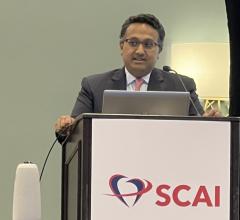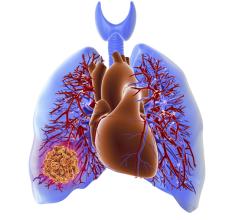
May 23, 2022 — New findings from the Ascension Health System’s internal National Cardiovascular Data Registry (NCDR) analyzing rates of percutaneous coronary intervention (PCI) for ST-elevation myocardial infarction (STEMI) in parallel with COVID-19 surges is being presented at the Society for Cardiovascular Angiography & Interventions (SCAI) 2022 Scientific Sessions. The findings reveal STEMI PCI cases dramatically dropped nearly 30% following the onset of the COVID-19 pandemic and have yet to recover to prepandemic levels.
STEMI, commonly recognized as a type of heart attack, is a medical emergency associated with high risk for serious complications including death. For the best outcomes, seeking care within the first 90 minutes of heart attack symptoms is critical and delaying care can lead to complications or increased mortality. This study comes at a time when heart disease remains the number one cause of death for Americans.
Data were abstracted from the Ascension Health System’s internal NCDR CathPCI registry between March 2018 and June 2021 across 42 centers throughout America. Timing of the COVID-19 pandemic was assessed with county level COVID prevalence. A segmented regression analysis with a monthly interrupted time series utilizing a linear regression model to quantify expected STEMI PCIs before and after the COVID-19 onset was performed. The predicted number of PCIs for STEMI was compared to predictions if COVID-19 had not occurred to evaluate differences in STEMI volumes.
STEMI PCI trends increased until pandemic declaration in March 2020 with a rapid decrease nadiring in April 2020 (first COVID surge). Thereafter, STEMI PCIs rose consistently until December 2020 (second COVID surge) when a less severe drop occurred. The segmented regression showed 194 STEMI PCIs done monthly (95% CI 182-207, p<0.001) with a month-tomonth increase of 2 cases (95% CI 1-2.8, p<0.001). After pandemic declaration, STEMI PCI decreased by 39 (95% CI -60 - -18, p<0.001) per month.
“Our network of PCI centers across the country gives us unique access to data that independent centers may not have,” said Manoj Thangam, MD, Interventional Cardiologist at Ascension Texas Cardiovascular in Austin, Texas and lead author of the study. “Despite STEMI rates rising, we’ve never gotten back to our pre-COVID baseline which probably tells us there is still hesitation to come to the hospital despite having a major heart attack.”
Researchers note a need for continued analysis of other potential consequences and ramifications of untreated STEMI patients that may result in increased mortality, heart failure and morbidities in the aftermath of the COVID-19 pandemic.
For more information: www.scai.org
Find more SCAI22 coverage here
Related COVID-19 Cardiology Content:
In-Hospital Deaths in STEMI Patients With COVID-19 Drop in 2021
The Long-term Cardiovascular Impact of COVID-19
COVID-19 Changes Properties Blood Cells
VIDEO: Antithrombotic Prophylaxis in COVID-19 Patients — Interview with Behnood Bikdeli M.D.
Coronavirus Disease 2019 (COVID-19) and the Heart—Is Heart Failure the Next Chapter?
PHOTO GALLERY: How COVID-19 Appears on Medical Imaging
Heart Damage Found in More Than Half of COVID-19 Patients Discharged From Hospitals
Overview of Randomized Trials of Antithrombotic Therapy for COVID-19 Patients
COVID-19 Can Kill Heart Cells and Interfere With Contraction


 February 18, 2025
February 18, 2025 








